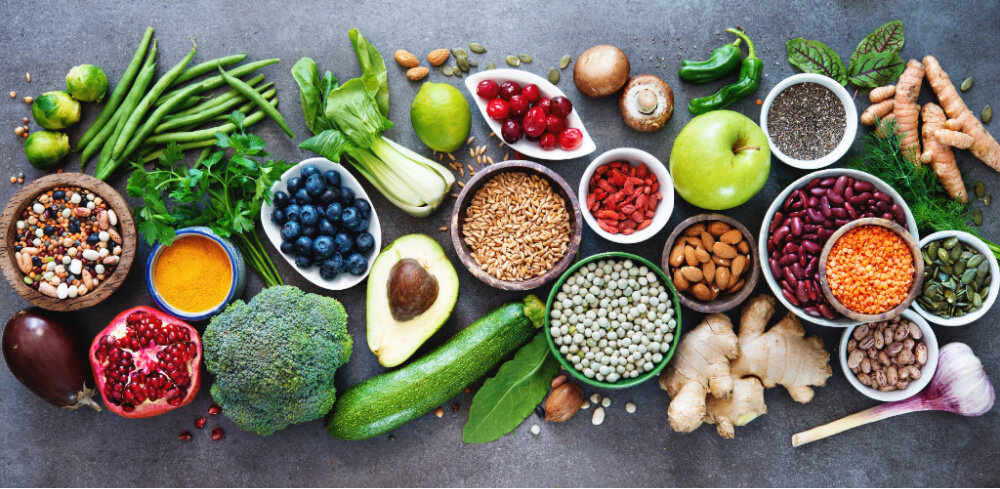It was just yesterday that my son was small enough to scoop up into my arms, snuggling my face into that soft spot on his neck as I swung him around the kitchen making snacks together. I now have to chase him down to snag a hug before he goes off into the world for hours or even days on end, and I am left to trust and work hard to let go just enough to give him more independence and autonomy as the days move forward. As with all change in parenting, simultaneously, my heart grows with pride and breaks with loss, but I believe in him deeply and can’t wait to see who he becomes in the years to come.
Sigh.
And.
Holy Gawd CAN THIS KID EAT!!!
The eating is just never ending. NEVER ENDING! If you are just entering the teenage realm, are deep in it, or are glimpsing the coming teenage eater in your sprouting preteen, you know exactly what I’m talking about.
They are hungry!
ALL.
THE.
TIME!
It’s no surprise as they are growing like a banana tree on steroids: they have increased physiological demands that scream at them tirelessly for extra nutrition. During the teenage years, their hormones are changing, organ and tissue development are increased, they are building bones and muscles, they are building their immune system, and sending large amounts of nutrients up to the brain for tissue development, nerve formation & transmission, hormone regulation, and to protect the brain from oxidative stress. It is an intense time in ALL THE WAYS: physiological, biological, psychological, and social.
Feeding them really good food is just one way to help them through.
I know what you’re thinking: BUT GOOD FOOD COSTS SO MUCH MONEY!!!
True. Frustratingly true! But let me ask you something: what is more important to you - spending extra money on trivial things: a fancy vehicle or condo, dinners at restaurants, a Starbucks coffee a day, seasonal new clothes, a weekend at a fancy resort, OR strong long term health (and disease prevention: cancer, diabetes, heart disease, mental illness, autoimmune disease) for your growing child? Never mind what you will teach them by choosing their health over material things. Will it be a financial output for a handful of years? Absolutely! But evaluating your priorities is an important step in managing the food cost struggle.
AND. AND there are many things we can do to try to keep the grocery bill down while feeding these ravenous teens well.
The Trick
We CAN fill our fridges and teenagers’ bellies without taking a second mortgage out on the house, but it takes effort and dedication (like any health related lifestyle choice 😉). Here are some ideas:
Shop Bulk: This is the smart, 20th Century way to feed a family, hands down. Firstly, organize your house in such a way to allow for bulk shopping, but keep your refills in a different location than your kitchen. Why? Because if the kids see that there are 100 Lara bars, they may feel it’s ok to take 5 to school every day and there goes your stash. Also, shop whole foods bulk as much as possible, rather than relying on processed foods. Think: nuts, seeds, whole grains, legumes, canned tomatoes, etc. Processed food WILL NOT fill up your growing sprout, but instead teach the body that it needs to rely on sugar for fuel, not actual nutrients (more on this below).
Comparison Shopping: Do your homework. It used to be called coupon shopping and now it’s all about who’s got the lowest slashes. I would honestly rather see people shopping locally, at Farmers markets in the summer, and through the local food suppliers during the winter months instead of buying from the heavy hitters in the Food Industry whose sole purpose is about making money NOT the health of its consumers. How much of your grocery bill can you contribute towards local suppliers? Is there a distributor near by that considers health over mass consumption? Can you buy meat from a local farm? Or buy bulk squashes in the Fall and store them to last you through the winter? How you buy food has as much to do with health as what you eat, consider this when you are planning your shops.
Beans & Legumes: POWER HOUSE FOODS are the way to go with growing, nutrient-ravenous teenagers, and beans & legumes can save you in the financial department too. Buy these babies in bulk, soak & sprout them to increase nutrient value and digestion/assimilation, then add them to soups, stews, veggie burgers, as side dishes, in spaghetti sauce, anywhere you can, bulk up your meals with these nutrient packed beauties! They are super cheap and super high in fibre, protein, low glycemic index carbohydrates, minerals, and vitamins, and satisfy the hungry belly for long periods of time. Here’s one of my son’s favourite lentil stews!
Oats & Whole Grains: Buy these in bulk also and teach your growing teens how to cook them. A bowl of brown rice + tamari + nutritional yeast + hemp hearts can go a LONG way when the body needs immediate energy (carbohydrates). Better yet, make extra the next time you use a grain as a side dish, then show your teen that they can just warm it up in a frying pan with a little oil and build a snack or meal around a warm grain. PRO TIP: rotate your grains to keep diversity & variety in the diet, this will ensure more nutrient variety as well.
Think QUALITY not Quantity: Have you ever noticed how your teen might be able to chow down an entire box of puffed rice in a day or so, but give that kid a real, solid smoothie and they stay out of the kitchen for hours? This is because if a body is given processed foods that are virtually nutrient VOID, it will ask for more food. This is why we have a tendency to overeat when we rely on crackers, chips, cereal, bread, etc. for fuel. BUT if you give the body what it needs: NUTRIENTS, then it will feel satiated with nutrients and be able to function for more hours without needing a continuous top up. Believe me when I say this: you are doing your child NO FAVOURS by feeding them processed food. Sometimes, yes, ok, for sure, but all the time, this is the trap. The poor thing is also much more likely to suffer more mood swings, acne, body odor, and depression, when fuelled by non-foods, laced with chemicals and refined sugar. Now, I know we are not all perfect in this department, and that using whole foods 100% of the time means a LOT of time in the kitchen, but here’s your chance to teach your kids how to make their own food sooner than later (more on this below).
So now that we’ve gotten a few shopping tips out of the way, here’s what I really want to share with you: HOW YOU FEED YOUR RAVENOUS TEEN WILL TEACH THEM LONGTERM HOW TO FEED THEMSELVES. They are ready. They are not only ravenous for food; they are ravenous for independence, for autonomy, for knowledge; they are ravenous for the skills to be their own person. Here are some ways you can support them:
Feeding the Ravenous Teenager
Smoothies: Smoothies are saving us around here these days. As many times a week as I can, I make my son a smoothie for after school and I load it with protein, good carbs, nut/seed butter, some spinach or a greens powder, and coconut water or almond milk, and I’m telling you: on the days he gets a smoothie, he’s an entirely different human than on the days we forget. He can also make it himself, so if I’m not around, or am busy, he knows how to throw together a yummy, simple smoothie, and likes to jazz it up a little too. Here are some kid loving smoothies to try.
Food at Regular Intervals: Kids need food every 2-3 hours. Well, we all do, but growing bodies particularly. If this is a struggle for them, find creative ways to support them in making this a priority - set a timer on their phone, or put homemade granola bars in their pockets, and bananas in their hands as they run out the door. Too much time in between meals is a detrimental trap, especially for teenage bodies. When the blood sugars bottom out, this is when we make bad decisions about food, reach for sugar, and/or become a raging moody monster (you know exactly what I mean 😉). Talk to them about keeping their blood sugars stabilized and how this will affect their health, their mood, their mind, and the way they interact with the world.
Batch Cooking: As much as you can, have good food on hand. If there are homemade banana oat bars on the counter, a bowl of nuts on the table, and cut up veggies in the fridge beside the hummus, then your kids will reach for those. Yes, it’s extra work, but enlist their help on the weekends, put in an extra few minutes every night, and you may notice that it’s not as hard as you think. Better yet, jump in on my seasonal Batch Cooking classes and see how many amazing meals & snacks we can pull off in a weekend!
Nutrient Packed Snacks: As mentioned above, aim for snacks that are nutrient-dense, not just full of calories. Store bought anything is going to have a lesser nutrient value than something you make, but I realize it’s difficult to make everything from scratch. Choose wisely. Have fresh fruit, frozen berries, nut & seed mixes, muesli, coconut yogourt, etc. as options instead of too many boxes of 100+ unrecognizable ingredient non-foods. Teach your kids the difference and make suggestions for snacks so that they know what to reach for and when. My son knows exactly what the options are when he’s hungry before bed: banana, cashew yogourt + frozen berries, apple + almond butter, etc., so he doesn’t find himself staring into the fridge or slapping globs of honey onto a 4th piece of bread (Gah! 🙄).
Kids in the Kitchen: I cannot say this enough: teach them about good food, how to make good food, how to read food labels and consider macronutrient balance (carbs + protein + fat). Even if they seem uninterested, what you say and what you do inevitably will ring through for them in some ways. It’s worth the effort. Ask for their help with food preparation, set them to the task of chopping or stirring or making meal decisions. Better yet, let them make dinner once a month or once a week and watch their creative side flourish. Check out my kids classes if you think your teen might benefit from learning from someone other than you, we have a lot of fun and the kids really learn a lot & beam with pride afterwards!
Well, if you’ve made it to the end: GOOD FOR YOU!! I know this was a long blog, but hey, I am so passionate about feeding our kids well and setting them up for positive relationships with food, that I’ll talk about it until those purple cows come home. As my pre-teen moves into the teen years, expect to hear more from me about feeding ravenous teens 😊



